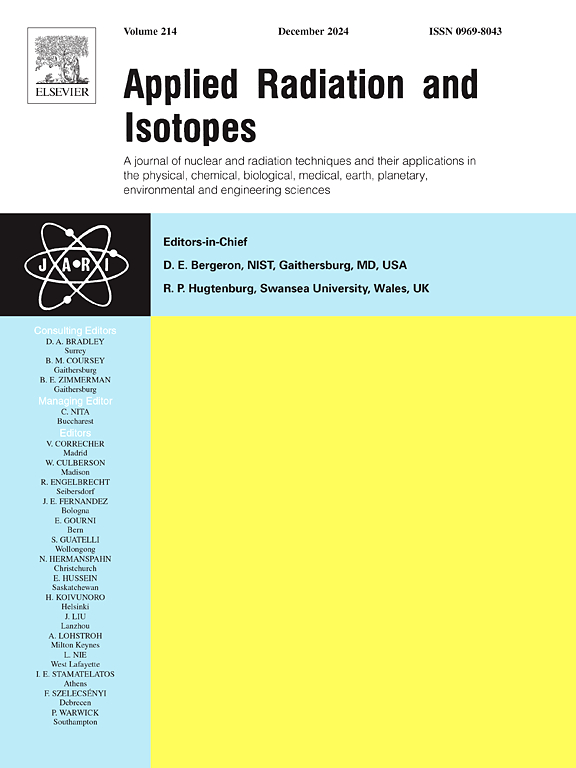中央邦沙赫多尔煤矿附近土壤中氡和钍的排放率
IF 1.8
3区 工程技术
Q3 CHEMISTRY, INORGANIC & NUCLEAR
引用次数: 0
摘要
这项研究的目的是评估印度中央邦沙荷多尔地区煤矿附近土壤中氡和钍气体的排放量。我们收集并分析了50个不同的土壤样本来进行这项研究。采用AQTEK SYSTEMS公司生产的SMART RnDuo装置测量钍表面呼出率(220Rn)和氡质量呼出率(222Rn)。该装置利用一个质量积累室集成了一个检测细胞涂有闪烁材料来测量呼出率。222Rn的变化范围为(3.81-32.79)mBq kg−1 h−1,平均值为14.62 mBq kg−1 h−1。220Rn的变化范围为(1.50-1002.58)Bqm−2h−1,平均值为500.49 Bqm−2h−1。因此,该平均值低于全球平均值。氡表面呼出率与氡质量呼出率也呈显著正相关。结果表明,研究区土壤作为建筑材料是安全的。本文章由计算机程序翻译,如有差异,请以英文原文为准。
Radon and Thoron exhalation rates in soil near coal mines in Shahdol, Madhya Pradesh
The purpose of this study was to assess the amounts of radon and thoron gas emissions from soil in the vicinity of coal mines within the Shahdol region of Madhya Pradesh, which is in India. We collected and analyzed 50 distinct soil samples to carry out the study. The SMART RnDuo device (produced by AQTEK SYSTEMS) was used to measure the thoron surface exhalation rates (220Rn) and the radon mass exhalation rates (222Rn). This device utilized a mass accumulation chamber integrated with a detection cell coated with scintillation material to measure the exhalation rates. 222Rn varies from (3.81–32.79) mBq kg−1 h−1with a mean of 14.62 mBq kg−1 h−1. 220Rn varies from (1.50–1002.58) Bqm−2h−1 with an average of 500.49 Bqm−2h−1. As a result the mean is lower than the average value worldwide. The thoron surface exhalation rate and the radon mass exhalation rate were also shown to be significantly positively correlated. The results demonstrate the safety of using the soil from the research region as a building material.
求助全文
通过发布文献求助,成功后即可免费获取论文全文。
去求助
来源期刊

Applied Radiation and Isotopes
工程技术-核科学技术
CiteScore
3.00
自引率
12.50%
发文量
406
审稿时长
13.5 months
期刊介绍:
Applied Radiation and Isotopes provides a high quality medium for the publication of substantial, original and scientific and technological papers on the development and peaceful application of nuclear, radiation and radionuclide techniques in chemistry, physics, biochemistry, biology, medicine, security, engineering and in the earth, planetary and environmental sciences, all including dosimetry. Nuclear techniques are defined in the broadest sense and both experimental and theoretical papers are welcome. They include the development and use of α- and β-particles, X-rays and γ-rays, neutrons and other nuclear particles and radiations from all sources, including radionuclides, synchrotron sources, cyclotrons and reactors and from the natural environment.
The journal aims to publish papers with significance to an international audience, containing substantial novelty and scientific impact. The Editors reserve the rights to reject, with or without external review, papers that do not meet these criteria.
Papers dealing with radiation processing, i.e., where radiation is used to bring about a biological, chemical or physical change in a material, should be directed to our sister journal Radiation Physics and Chemistry.
 求助内容:
求助内容: 应助结果提醒方式:
应助结果提醒方式:


